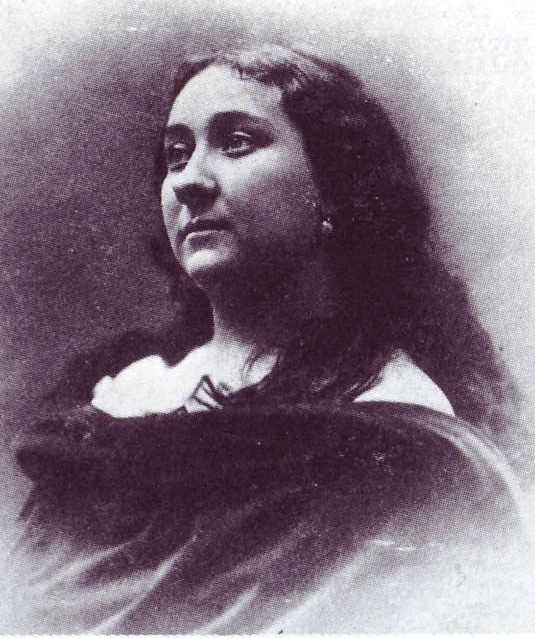Suzanne Lagier on:
[Wikipedia]
[Google]
[Amazon]
Suzanne Lagier (30 November 1833 — 1893) was a French theatre actress and
opera
Opera is a form of theatre in which music is a fundamental component and dramatic roles are taken by singers. Such a "work" (the literal translation of the Italian word "opera") is typically a collaboration between a composer and a libre ...
singer. She often performed with Thérésa and made many appearances in Paris
Paris () is the capital and most populous city of France, with an estimated population of 2,165,423 residents in 2019 in an area of more than 105 km² (41 sq mi), making it the 30th most densely populated city in the world in 2020. ...
, France, and Saint Petersburg
Saint Petersburg ( rus, links=no, Санкт-Петербург, a=Ru-Sankt Peterburg Leningrad Petrograd Piter.ogg, r=Sankt-Peterburg, p=ˈsankt pʲɪtʲɪrˈburk), formerly known as Petrograd (1914–1924) and later Leningrad (1924–1991), i ...
, Russia.
Biography
Lagier was born inDunkirk
Dunkirk (french: Dunkerque ; vls, label= French Flemish, Duunkerke; nl, Duinkerke(n) ; , ;) is a commune in the department of Nord in northern France.Rue du Magasin à Poudre, but grew up in a boarding school in
 Lagier was popular at the time, and she attracted the attention of members of the
Lagier was popular at the time, and she attracted the attention of members of the
Paris
Paris () is the capital and most populous city of France, with an estimated population of 2,165,423 residents in 2019 in an area of more than 105 km² (41 sq mi), making it the 30th most densely populated city in the world in 2020. ...
and her father was a musician. From an early age, Lagier wanted to be an actress and made her début at age thirteen (in 1846), at the Théâtre des Variétés
The Théâtre des Variétés is a theatre and "salle de spectacles" at 7–8, boulevard Montmartre, 2nd arrondissement, in Paris. It was declared a monument historique in 1974.
History
It owes its creation to the theatre director Mademoisell ...
with the show ''Veuve de quinze ans'', a role which was written for her by Comédie en vaudeville Pierre Adolphe Capelle. After a stay in London
London is the capital and List of urban areas in the United Kingdom, largest city of England and the United Kingdom, with a population of just under 9 million. It stands on the River Thames in south-east England at the head of a estuary dow ...
, she made her real début at the Théâtre du Palais-Royal in 1848. Later she went to Saint Petersburg
Saint Petersburg ( rus, links=no, Санкт-Петербург, a=Ru-Sankt Peterburg Leningrad Petrograd Piter.ogg, r=Sankt-Peterburg, p=ˈsankt pʲɪtʲɪrˈburk), formerly known as Petrograd (1914–1924) and later Leningrad (1924–1991), i ...
in Russia before returning to Paris, where she performed at the Théâtre de l'Ambigu-Comique in 1855, at the Théâtre de la Gaîté in 1856 and finally the Théâtre de la Porte-Saint-Martin in 1859.
In 1865, unusual for the time, she signed a contract with the theatre café-chantant
(French: lit. 'singing café'), , or , is a type of musical establishment associated with the Belle Époque in France. The music was generally lighthearted and sometimes risqué or even bawdy but, as opposed to the cabaret tradition, not parti ...
(café-concert) Eldorado, a counterpoint to the growing popularity of singer Thérésa. The café-chantant was relatively successful, and within a few weeks the public elected her as the queen of the café-chantant and also of operetta. However, Lagier was not appreciated by the critics, who continued to prefer Thérésa to her. She continued to sing while returning to theatre regularly (both in Paris and Saint Petersburg) until 1880, when she married the tenor
A tenor is a type of classical male singing voice whose vocal range lies between the countertenor and baritone voice types. It is the highest male chest voice type. The tenor's vocal range extends up to C5. The low extreme for tenors i ...
(or possibly baritone) Eugène Dufriche in London. She died in 1893.
Popularity and criticism
 Lagier was popular at the time, and she attracted the attention of members of the
Lagier was popular at the time, and she attracted the attention of members of the Jockey-Club de Paris
The Jockey Club de Paris is a traditional gentlemen's club and is regarded as the most prestigious of private clubs in Paris. It is best remembered as a gathering place of the elite of nineteenth-century French society. Today it is decidedly but ...
. However, she received sharp criticism from the French newspaper ''Le Figaro
''Le Figaro'' () is a French daily morning newspaper founded in 1826. It is headquartered on Boulevard Haussmann in the 9th arrondissement of Paris. The oldest national newspaper in France, ''Le Figaro'' is one of three French Newspaper of recor ...
'' — the collaborator of the magazine, Alfred Delvau, about the name "la grasse", referring to the guttural pronunciation of her R's. Louis-Victor-Nestor Roqueplan opined that Lagier would never learn more than vulgar insolence. Lagier was also the subject of some caricature
A caricature is a rendered image showing the features of its subject in a simplified or exaggerated way through sketching, pencil strokes, or other artistic drawings (compare to: cartoon). Caricatures can be either insulting or complimentary, a ...
s, including a satirical newspaper '' La Lune'' depicting her and Thérésa.
References
Further reading
* {{DEFAULTSORT:Lagier, Suzanne 1833 births 1893 deaths 19th-century French women opera singers Musicians from Dunkirk 19th-century French actresses French child actresses